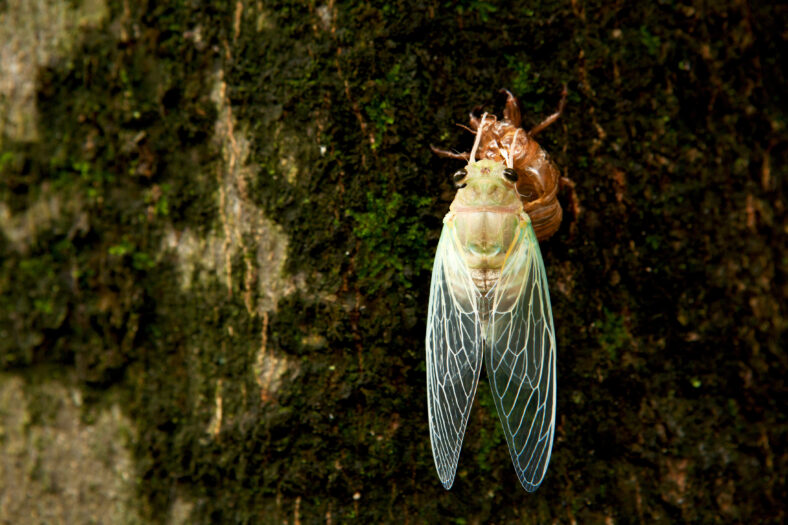Cicada Wings Evolved To Help Them Avoid Being Eaten By Birds

The evolution of insect-eating birds may have spurred rapid changes in the flight ability of ancient cicadas, according to new research.
Over the course of 160 million years, the bodies and wings of these insects saw a dramatic shift at the same time that birds began to dominate the skies as predators.
Evolutionary history has shown that wings have evolved independently four times: in insects, flying reptiles, birds, and bats.
However, their traits are hard to study because wings don’t preserve very well, so there are few fossilized specimens. Ancient cicadas are the exception, though.
In the study, a team of researchers assessed the evolutionary changes in more than 80 species of cicada wings during the Mesozoic era.
They used 300 mapping data points on the wings of ancient cicadas and found that in their earlier years, cicadas had wingspans similar to modern butterflies. Some stretched to as much as six inches across.
But throughout millions of years, the wings across all species started growing a little wider even as they were also becoming slimmer.
They even gained 19 percent more wing muscle mass. According to the researchers, the changes would have allowed the cicadas to fly up to 39 percent faster.
This suggests that predation by birds drove the rapid development of cicadas. They had to fly fast enough in order to escape being caught and eaten mid-flight. For the cicadas, the improved efficiency in flight was worth the energy it burned up.

Sign up for Chip Chick’s newsletter and get stories like this delivered to your inbox.
“Most species of early birds probably fed regularly, or even exclusively, on insects,” said Chunpeng Xu, the lead author of the study and a paleontologist at the Chinese Academy of Sciences’ Nanjing Institute of Geology and Paleontology.
“They were as small as sparrows, with short, toothed jaws and wide, gaping mouths that were well-suited for catching insects in the trees.”
The signs of increased flight speed are strong, but it is less clear if the new wing structures enabled ancient cicadas to maneuver through trees and shrubs better. The faster that creatures move, the less adept they are at making sharp turns.
Overall, environmental pressures caused cicadas to race against time for their survival. They continued refining their flight mechanisms as a response to threats and as a way to adapt to the surrounding landscape.
Understanding the intricacies of cicada flight offers valuable insights into evolution and survival strategies. It helps researchers learn more about the complex relationships between predator and prey.
These findings have implications for contemporary biology, such as how current species could adapt in response to climate change and habitat destruction. They serve as a reminder that evolution is an ongoing process that never stops.
The details of the new study were published in the journal Science Advances.
More About:News





